1865 Coat of Arms Issue
Background
President Medina sent his design to the Honduran consul in London in early 1864 with instructions to have stamps printed at a reasonable cost by an experienced printing house. The stamps were printed probably in Belgium in late 1864. By late 1865 the postal rates had changed and the 2 real stamps were sold to the public for one real each.
Stamp Details
Period of validity December 1865 - March 1877.
Primary plate was the original die carved on wood. Printed in sheets of 480 stamps divided into four equal panes.
Quantities printed- at least 1.5 million of each of the two colors!
Colors: 2 issued. A fleshy pink on a wood pulp paper intended for areas where copper coinage was enforced and a light green on cotton fiber paper for areas where copper coins were repudiated and silver was used. The two coinages required separate bookkeeping.
Primary Plate
The primary plate of 15 stamps had many constant flaws. Three are noticed without magnification. Their positions are shown below.
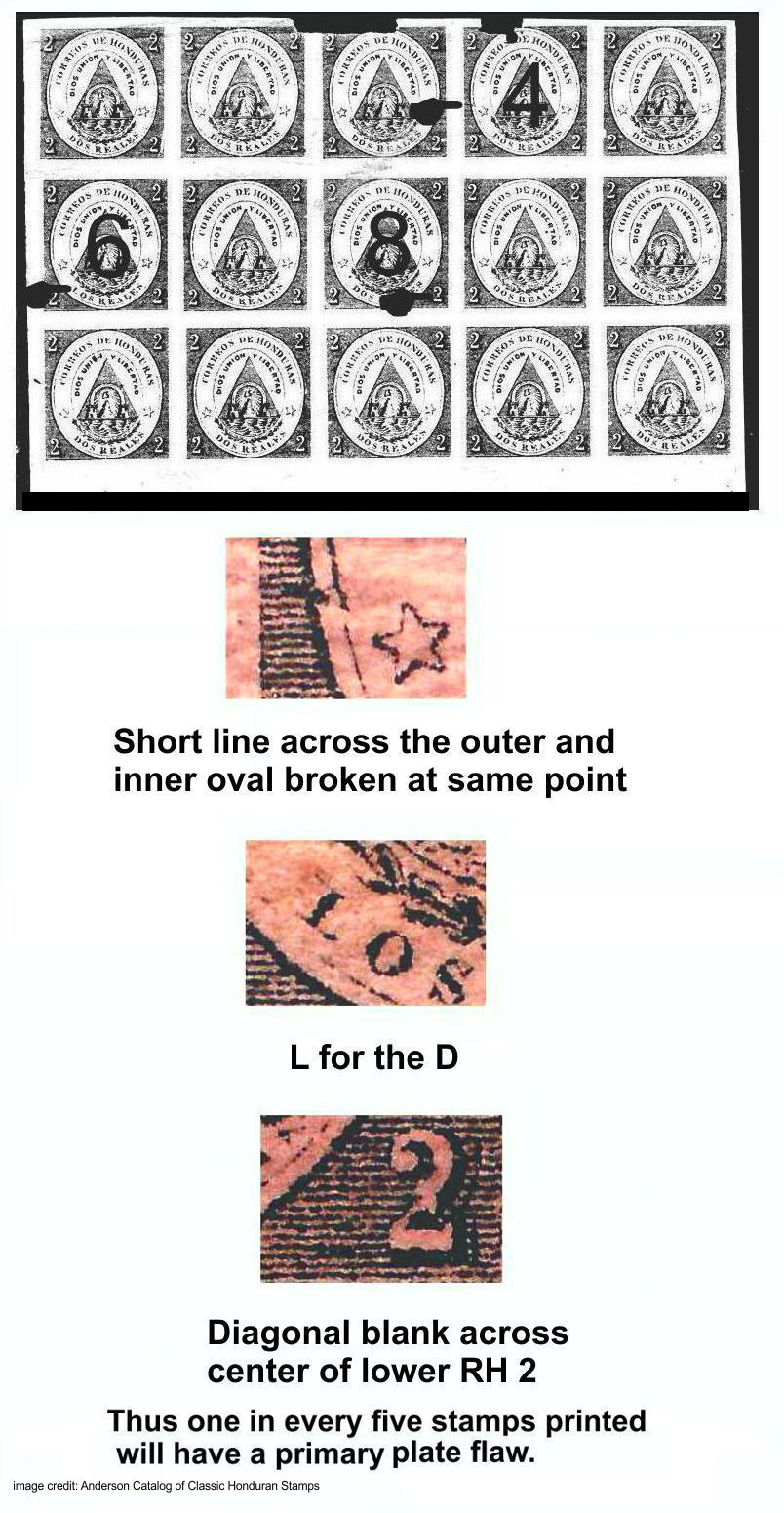
Secondary Plate Flaws
8 primary plates were combined into a single secondary plate of 120 stamps. Easily visible without magnification, there are two constant secondary plate flaws in each sheet of 120 stamps. They are CORRFOS for CORREOS at position 9 and DGS for DOS at position 12. Thus one of every sixty printed stamps has a secondary plate flaw.
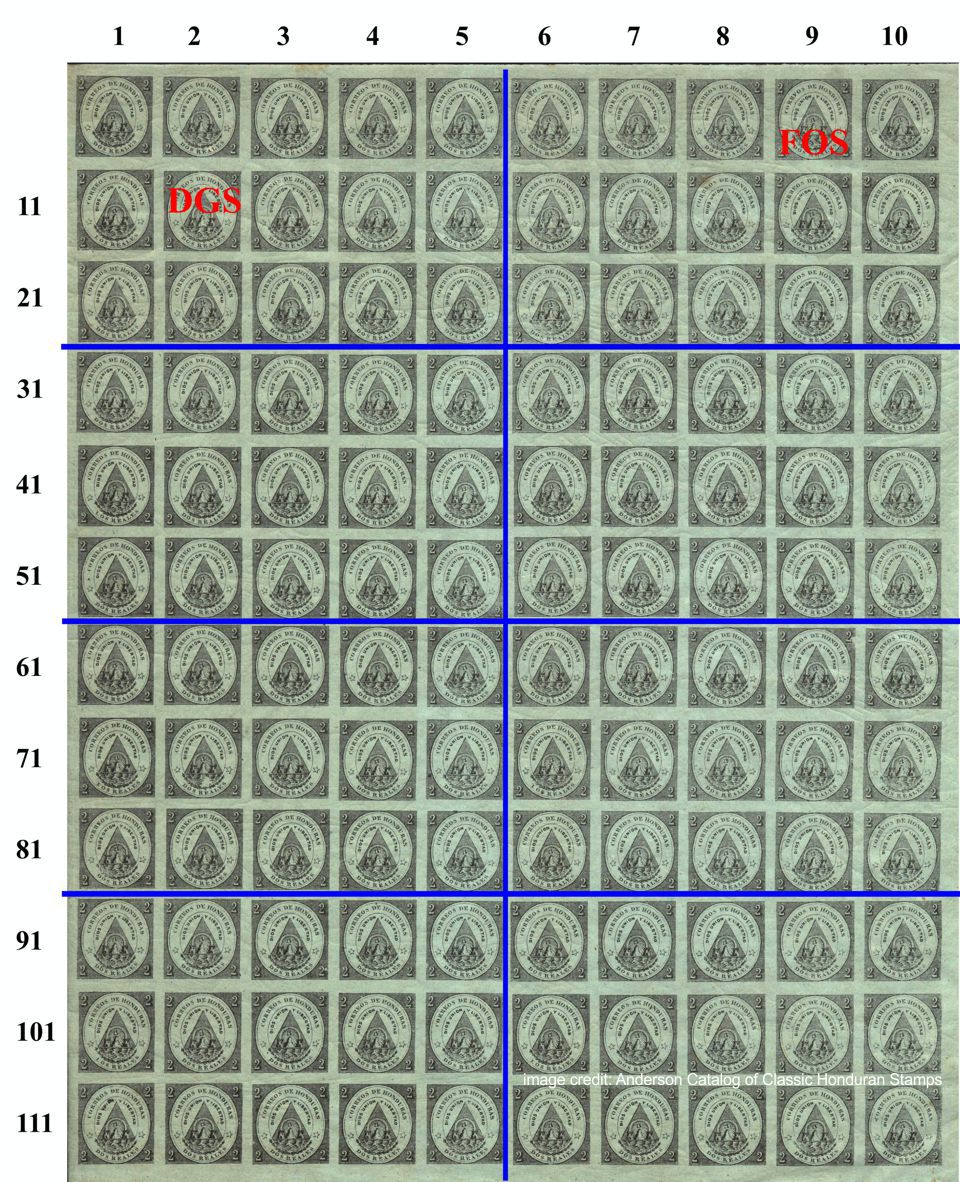
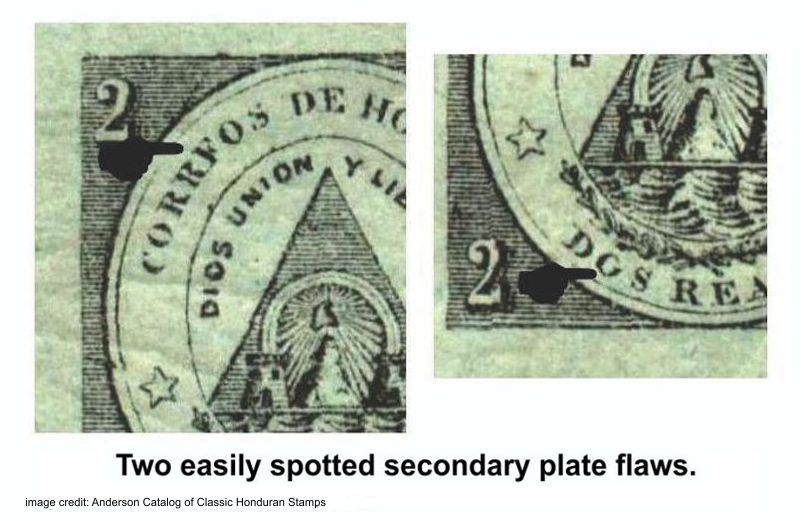
Tertiary Plate Flaws
The stone plate of 120 stamps was applied to a larger stone four times. Because the stone was heavy and the printer worked at a rotating table, the stones were applied as illustrated below.
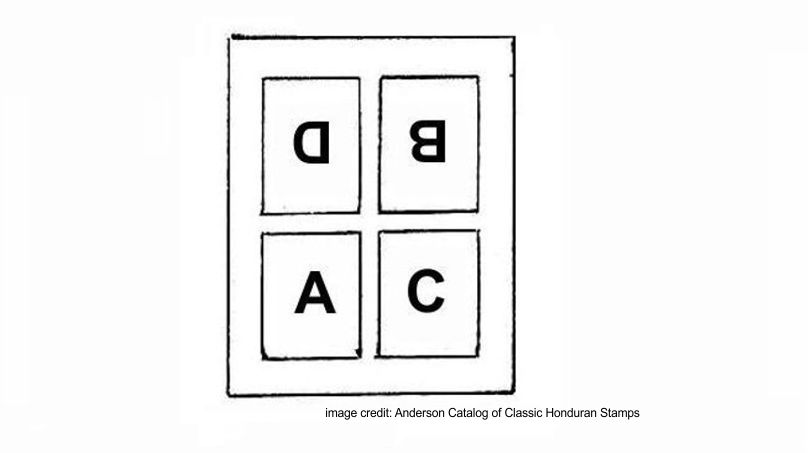
There was only one printing and one tertiary stone. However, the pink stamps were printed on a German wood paper died with an ink called Perkin's mauve. The green stamps were printed instead on a paper primarily of cotton. Neither paper is hard and both crease readily. The wood fiber is more absorbant and yields a design of greater contrast and less clarity. It also is more fibrous and where cut can be seen to be less clean. The cotton paper is less fibrous and yields cleaner cuts. The ink does not penetrate deeply and produces an image of greater clarity.
Yes, you can determine where a single stamp was positioned on the final printed sheet of 480 stamps! What follows is a part of a key that makes such a determination possible.
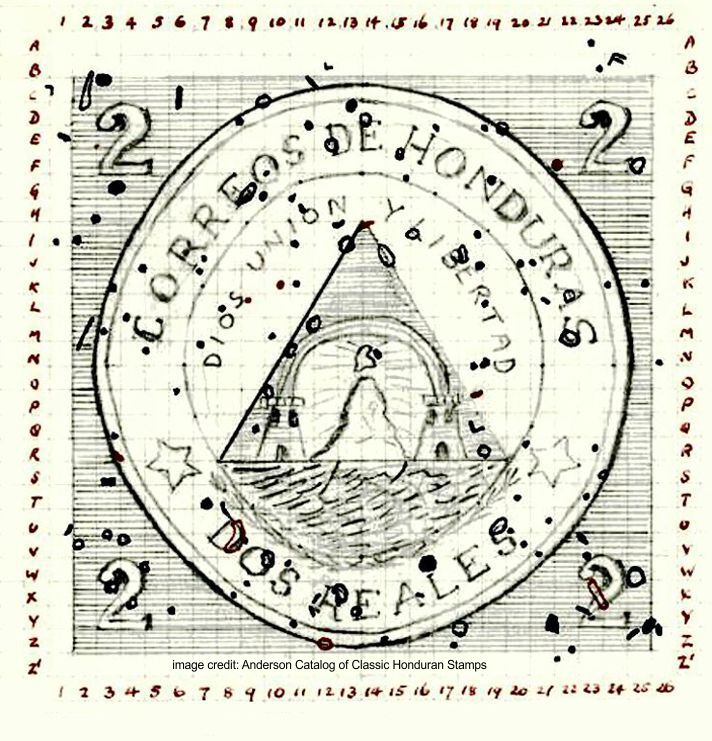
The government realized the demand for postage stamps and printed enough to both use as a currency
to pay employees, and to enter the illicit market, selling directly to stamp dealers as a form of national income. Many sheets of the first issue were sold by the Honduran diplomats directly to a Liverpool stamp dealer many months before they were ever seen in Honduras.
Thus the notorious mint examples of the first issue are described euphemistically as European wallpaper with a Latin flair.
----------------------------------------
-Communication from Brian Moorhouse dated 13/08/2016.
-First Issue of Stamps...Honduras in American Philatelist, 1915 pps 85-86.
-First Stamps of Honduras by Bertram Poole in Stamp Spec #4 1940 pps 72-78.
-Honduras Report by Richard Washburn The Oxcart, summer 1989.
-Postal History to 1877 Part 4 by Irving Green in Collectors Club Philatelist Vol 45:1 January 1966 p. 27, and Part 7 Vol45:4 July 1966 p. 232.
-Stamp Collector's Magazine. August 1865 and July 1867.
-Washburn, Richard. Gold Medal 1992 exhibit Early Postal History of Honduras.
8/24

